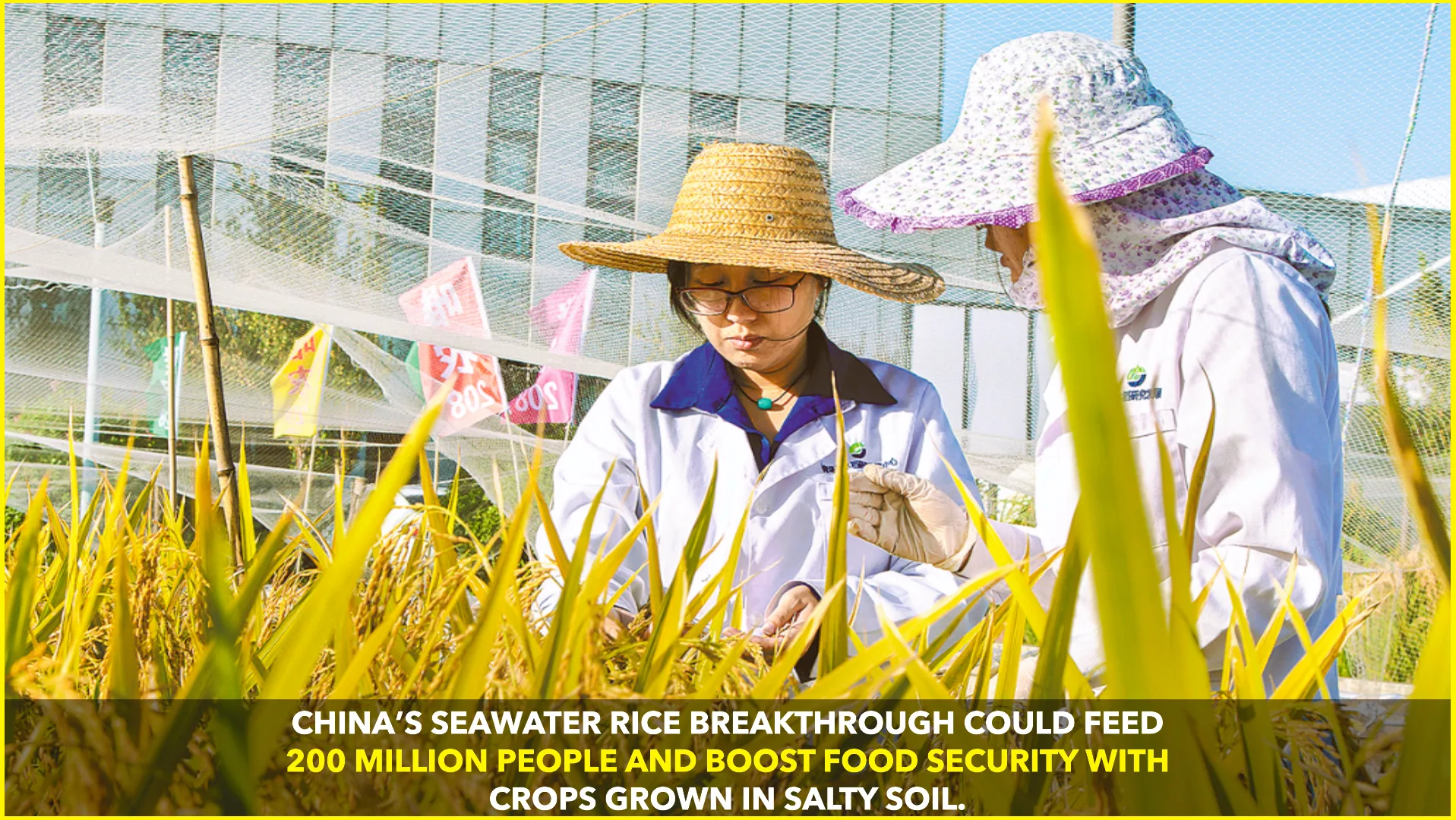China has announced a major scientific milestone that could reshape the future of agriculture and global food supply. Researchers at the Qingdao Saline-Alkali Tolerant Rice Research Centre have successfully developed “seawater rice,” a special strain capable of thriving in salty soil where traditional rice cannot grow.
This achievement holds immense promise in the fight against food insecurity, with experts estimating that it could feed hundreds of millions of people by the end of the decade.
From Yuan Longping’s Vision to Reality
The seawater rice project was first envisioned by Yuan Longping, celebrated as China’s “Father of Hybrid Rice.” Yuan’s pioneering work revolutionized rice cultivation in the 20th century, helping lift millions out of hunger. Before his passing in 2021, he dreamed of creating rice varieties that could grow in saline or alkaline soil, land that was previously considered unusable for farming.
Today, that vision is being realized. Led by the Qingdao research team, scientists have tested more than 200 rice varieties along the Yellow Sea coastline. The trials revealed remarkable results — certain strains not only survived in diluted seawater but also produced yields as high as 10 tons per hectare. For comparison, average global rice yields hover around 4.5 to 5 tons per hectare.
Unlocking Salty Soil Potential
China faces a significant agricultural challenge, with nearly one million square kilometers of land categorized as too saline for farming. Traditionally, this land was dismissed as wasteland. But seawater rice offers a chance to unlock its potential.
Researchers estimate that converting just 10% of this saline land could generate 50 million tons of additional grain annually. That is enough to feed approximately 200 million people — nearly equivalent to the population of Brazil.
Already, large-scale planting has begun. By 2024, more than 400,000 hectares of seawater rice had been cultivated across different regions. Plans are underway to expand this area to 667,000 hectares in the coming years. If successful, China’s overall rice production could increase by nearly 20%.
Boosting National and Global Food Security
The development comes at a crucial time. With climate change, rising sea levels, and global population growth putting immense pressure on food systems, innovations like seawater rice may serve as a lifeline.
China, the world’s largest consumer and producer of rice, has a strong incentive to secure its food supply. Yet the implications of seawater rice extend far beyond national borders. Countries in Asia, Africa, and the Middle East, where soil salinity is a growing problem, could also benefit from this technology.
Agricultural experts believe this breakthrough could set a precedent for sustainable farming. By transforming once-barren land into productive farmland, seawater rice may reduce reliance on freshwater resources, which are becoming increasingly scarce worldwide.
Economic and Environmental Impact
Beyond food production, seawater rice also promises economic and environmental benefits. Farmers working in coastal regions or areas affected by soil salinization could gain new livelihood opportunities. Additionally, using saline land for cultivation may reduce pressure on fertile farmland, helping preserve ecosystems and biodiversity.
China’s government has pledged support for scaling up seawater rice production, seeing it as both a scientific achievement and a strategic move for food security. If the project maintains its momentum, the country could not only meet its domestic needs but also share its expertise globally, positioning itself as a leader in agricultural innovation.
A Step Toward Feeding the Future
The story of seawater rice is one of persistence, vision, and scientific ingenuity. From Yuan Longping’s dream to the modern research labs in Qingdao, the journey reflects how innovation can rewrite the rules of farming.
As the world grapples with hunger and environmental challenges, China’s seawater rice offers a glimmer of hope. If fully realized, this breakthrough could ensure that millions of people have food on their plates, proving that even the saltiest soil can yield life.










